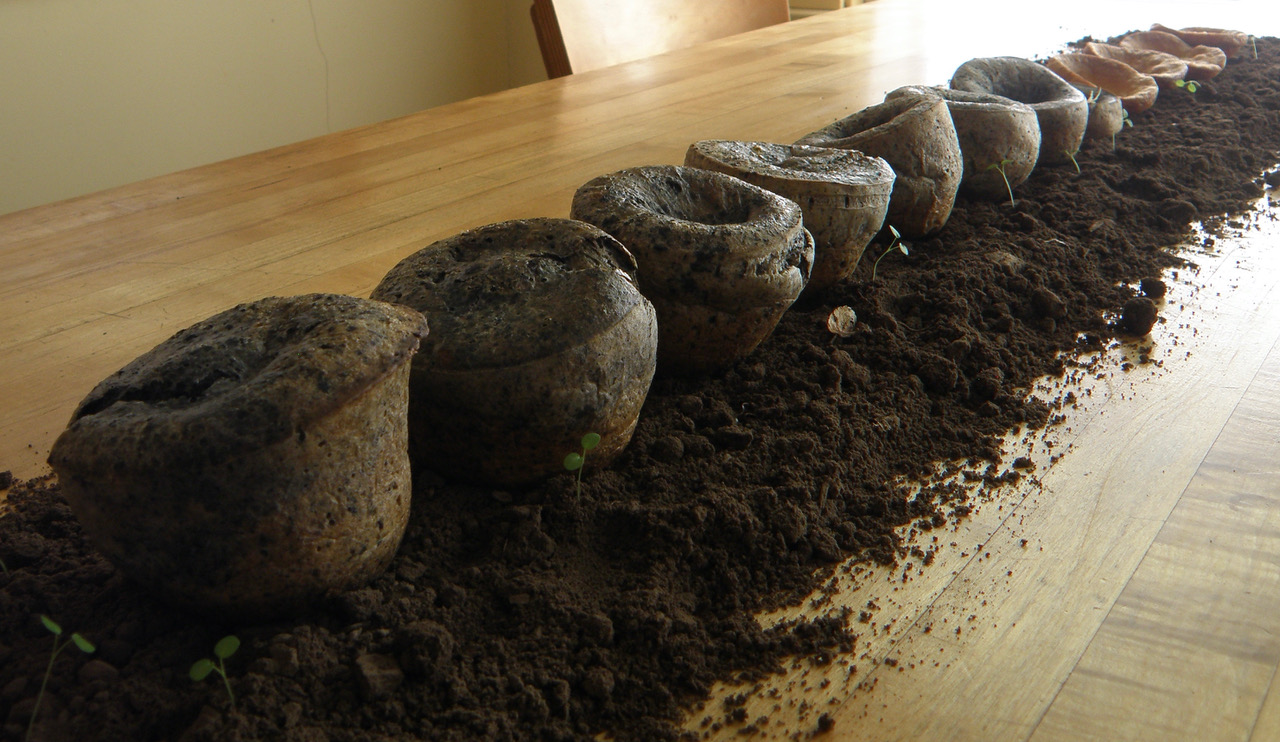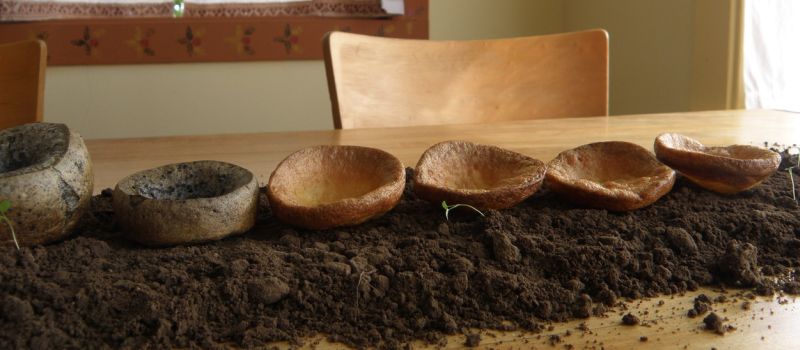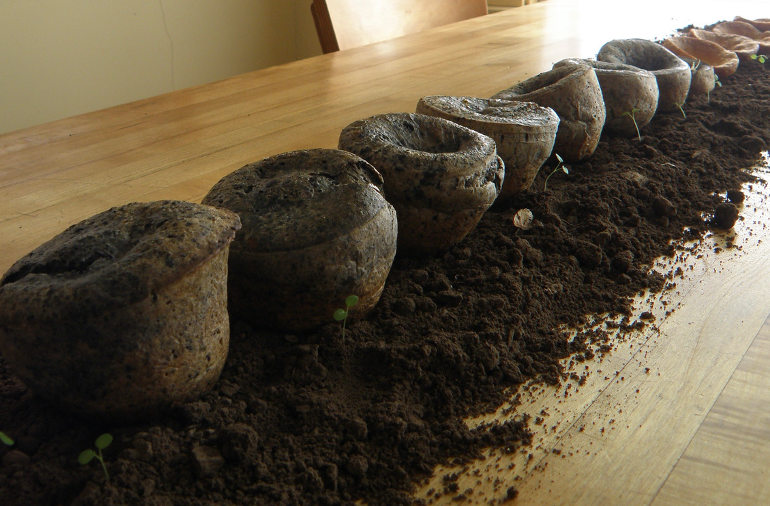So much carbon dioxide has now accumulated in the atmosphere that it’s no longer possible to prevent a dangerous rise in global temperatures through purely technological means. In other words, it’s too late to prevent catastrophic ecological damage and human suffering simply through building more renewable electric capacity and improving energy efficiency.
Humanity can keep atmospheric carbon dioxide concentration within tolerable limits, but only if we do not aim to sustain today’s profligate material production and wealth accumulation, let alone continue increasing production. Instead, we must deeply reduce production and thereby shrink energy and material use.
In contrast, conventional green-growth thinking starts with “decarbonizing” the economy (by building more and more wind farms, solar parks, electric vehicles, energy-efficient appliances, etc.) in order to reduce carbon emissions per dollar of wealth generated, thereby making it possible, in theory, to sustain and even increase material production without increasing the rate of carbon emissions. But in practice, progress in decarbonization gets swamped out by growth in material production.
The energy supply required to meet expanding global energy demand can never be fully decarbonized. That’s because any attempt to capture diffuse solar irradiation and wind energy across vast swaths of the Earth’s surface cannot substitute for the fossil fuel bonanza of the past century and a half. Even if that were possible, the result would be irreparable ecological damage.
Policy should not start with the assumption that growth can be increasingly “decarbonized” by building more and more wind and solar capacity and improving energy efficiency indefinitely into the future; in any case, that is barred by non-repealable physical laws. Policy should instead aim to reduce total carbon emissions by reducing total material production.
A downsizing economy will require a smaller and smaller energy supply; in time, energy demand will become modest enough that it can be fully satisfied with renewable sources, sustainably deployed. Fossil carbon emissions will be reduced to zero, while, if goods and services are distributed equitably, the reduced material output can be made sufficient to meet society’s material needs.
It’s not just us saying this. A highly respected international group of researchers recently evaluated the various climate-action scenarios laid out by the international climate-science body IPCC. They weighed each of the scenarios with regard to their relative ability to limit greenhouse warming to 1.5º C —a threshold once thought safe and now viewed as too hot but probably the best we can hope for at this point.
Only a strategy that reverses growth in material production, concluded the researchers , can “substantially minimize many key risks for feasibility and sustainability compared with established, technology-driven pathways.” They showed that all pro-growth approaches will probably fail to keep up with growing demand for renewable energy, fail to sustain increases in energy efficiency, and fail to avoid extensive ecological damage. Could the world’s policymakers decide to be optimistic, roll the dice, and pursue green growth anyway, to see if humanity can make it work? They could, but by the time we find out that sure enough, green growth is leading to collapse, it will be too late to turn back.
***

These dozen sourdough popovers can serve as a metaphor for reducing material production steadily over time, until it reaches a sustainable “steady state”. The first eight rolls in the lineup were made with batter containing 1.5 percent ground charcoal (a stand-in for fossil carbon, pictured above). The four at the end were made from the same batter, but before the charcoal was mixed in.

If we follow the implications of IPCC’s report Global Warming of 1.5º C or the UN’s latest Emissions Gap Report, then greenhouse emissions must be reduced very steeply within the next fifteen years. Accordingly, viewing this lineup as a time series, each popover would represent a period of about two years.
The first popover was made with an excess of batter, relative to the standard recipe. Each of the seven succeeding black popovers contains less batter, and therefore less total carbon, than the one before. The last four, and smallest, popovers (let’s call them “popunders”) are of equal size and free of charcoal, with somewhat concave tops. They represent the continuation of production at a lower, now constant, rate—a rate that can be supported entirely by non-fossil energy sources.

To instead portray a green-growth scenario in this way would have looked very different. Starting with an almost full cup and increasing the amount of batter used for each successive popover not only would have resulted in a messy culinary catastrophe; it would have also required that carbon be added to all dozen rolls, because each would represent an economy far too large to be “powered” by non-fossil energy. Even with increased technological efficiency, which could be illustrated by gradually reducing the concentration of charcoal in the batter as the quantity of batter increased, the total quantity of carbon would not diminish and would probably increase, as over time, exponential growth outstripped diminishing returns on efficiency.
Assorted Sourdough Popovers and Popunders
From the field and kitchen of discomfort food
(makes one dozen rolls)
113g sourdough starter (discard or fed)
3 large eggs
227g slightly warm milk
5g salt
120g all-purpose flour
8g powdered charcoal
Place a muffin pan in a 450°F preheating oven. Meanwhile, combine the starter, eggs, salt and milk. Add the flour and mix till just combined. Don’t over-mix. Weigh out and divide 60g of the batter into four small bowls—15g into each. Add the charcoal to the remaining batter and lightly mix it in till just combined. Once the oven is preheated, take the muffin pan out and spray generously with oil. Orienting the pan with four cups across and three down, start at the top left cup, pour the carbon batter right to the top with a little spilling over the rim. Then pour each of the 15g charcoal-free batter portions into the second, fourth, sixth and eighth cups (counting left to right and top to bottom). Pour the remaining charcoal batter into each of the remaining cups, measuring by eye, and reducing the amount of batter in each successive cup. There will then be the first cup, which is slightly overflowing; the third cup almost full to the rim; the fifth cup a little farther below the rim; the seventh cup about three quarters full; and so on, until the twelfth cup has slightly more than the cups that have 15g. Now all the 12 cups have batter in them — eight with the charcoal batter and four without. Place the pan in the oven and bake at 450°F for the first 15 minutes. Then turn the temperature down to 375°F and bake for another 18 minutes or so.






